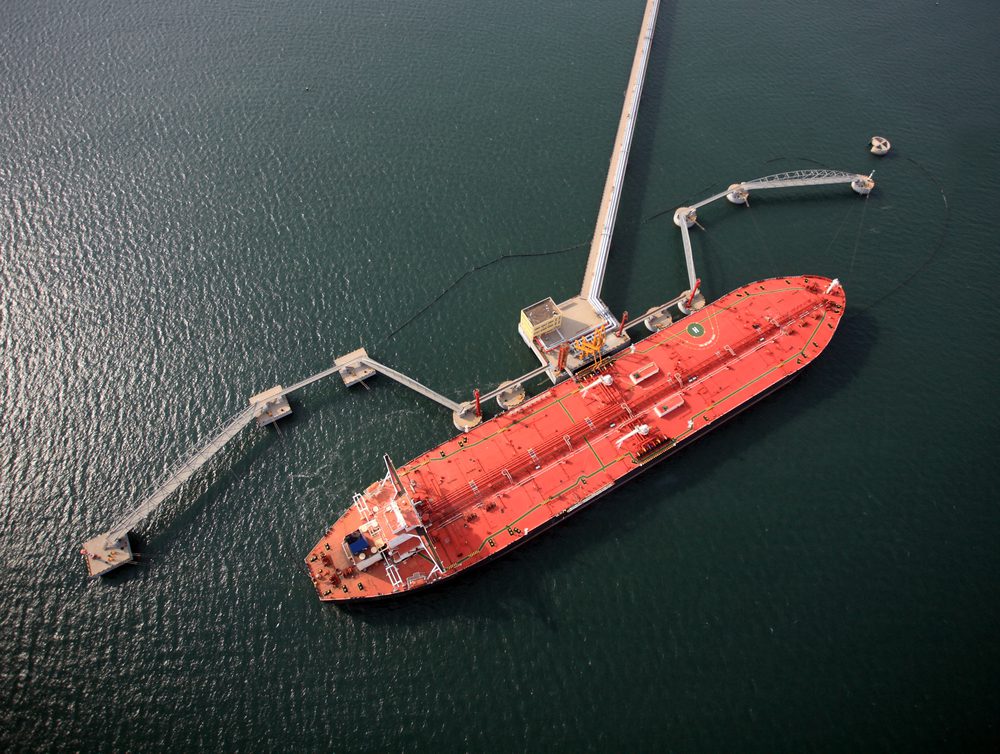tcly / Shutterstock
By Brian Wingfield and Firat Kayakiran (Bloomberg) –Supertankers hauling oil on some of the world’s longest trade trade routes had already been enjoying a massive windfall. Then came a reported attack on an Iranian ship.
Daily rates for Very Large Crude Carriers to ship oil to China from the Persian Gulf soared by 90% to $300,391 a day, Baltic Exchange data show. Just a month ago those same vessels, which can carry 2 million barrels of crude, were earning $25,000 a day.
“We are seeing record levels today,” said Jonathan Chappell, an analyst focusing on marine transportation equities at Evercore ISI. “$300,000 VLCC rates are unprecedented, at least in the last 20 years.”
The surge comes amid a confluence of factors including U.S. sanctions on some vessels from China and geopolitical risk in the Middle East. Iran on Friday said that missiles hit one of its ships in the Red Sea. The incident comes less than a month after an attack on Saudi Arabia’s oil industry, which initially knocked out half of the kingdom’s output.
Shipping rates have been steadily rising for weeks. The market was already set to tighten in the short term as refineries wind down seasonal maintenance. Some ships were also due to be taken out of service to fit sulfur-reducing scrubbers ahead of the IMO 2020 environmental rules that are set to take effect in January, according to Chappell.
September Surge
The latest surge began in late September following the Trump administration’s sanctions on units of China’s COSCO Shipping Energy Transportation Co., the world’s largest merchant vessel owner. That rendered a significant number of ships off-limits. Even though oil traders have again started booking supertankers operated by the Chinese shipping giant, rates have continued to climb.
That’s due in part to decisions by Exxon Mobil Corp. and China’s Unipec to avoid vessels that were involved in trades related to Venezuela, also under U.S. sanctions, according to Burak Cetinok, head of research at Arrow Shipping Group in London. The attack on the Iranian ship has added to risk premiums that were already high following the attack in Saudi Arabia last month, he said.
The sky-high rates may be leading some companies to be less choosy about vessels. Exxon chartered the Malibu, which loaded in Venezuela back in June, according to people familiar with the matter and tanker data compiled by Bloomberg.
Earlier this week, earnings for ships on the benchmark Persian Gulf-China route began to pass the $100,000-a-day mark. One supertanker, the Ardeche, has been booked for a journey in early November from the Middle East to Singapore at a rate equating to $327,853, excluding idle days, according to a fixture report listed by shipping pool Tankers International.
Rates for vessels on other routes, including from the Middle East to the U.S. Gulf, are also at multi-year highs, Baltic Exchange data show.
The cost of demurrage for VLCCs, which is charged when a ship fails to load or discharge during an agreed-upon period, has jumped to at least $250,000 per day from $50,000 to $75,000 a day before the sanctions, said McQuilling Services LLC’s senior adviser for shipping and finance Stefanos Kazantzis.
The surge is likely to continue through the fourth quarter, with a seasonal dip in early 2020, but 2020 should remain strong, according to Randy Giveans, vice president for equity research at Jefferies LLC in Houston.
He expects a very good market for at least 18 months and possibly into 2021-2022. “I’m not saying rates will stay at these record levels for 18 months, but rates will certainly remain well above recent years in the coming quarters/years,” Giveans said.
–With assistance from Serene Cheong, Alex Longley, Catherine Ngai, Sheela Tobben and Lucia Kassai.
© 2019 Bloomberg L.P

 Join The Club
Join The Club











